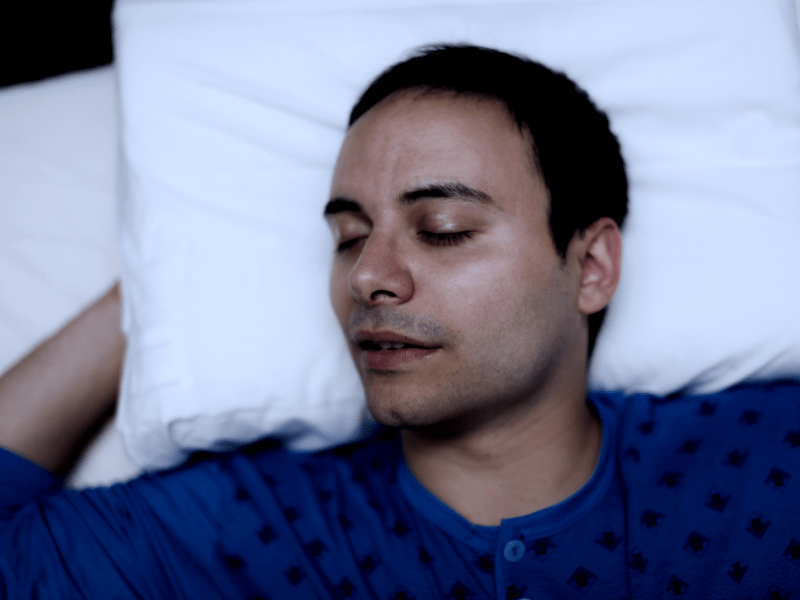Introduction
Are you waking up feeling tired despite a full night's rest? This could potentially be due to fluctuations in your oxygen saturation during sleep. In healthy adults, normal blood oxygen levels should range between 94% to 98%.
This iSense post will guide you through the importance of maintaining optimal oxygen saturation while sleeping and how it impacts overall health. Ready for a deep dive into nighttime O2 levels? Keep reading!
Understanding Normal Oxygen Saturation During Sleep
Oxygen saturation refers to the percentage of oxygen-saturated hemoglobin compared to the total amount of hemoglobin in your blood. Keeping an optimal balance is crucial, especially during sleep, because it contributes significantly to overall health and well-being. Healthy individuals typically maintain blood oxygen levels above 94% while sleeping. This indicates that there is sufficient oxygen reaching the brain, essential for rejuvenating rest.
Various factors can influence these figures. Altitude or preexisting conditions may cause slight variations within acceptable ranges. However, normal oxygen saturation levels should remain within 94% to 98%. Oxygen levels dropping below this range particularly during sleep may signal a possible underlying issue such as sleep apnea – a disorder known for causing low oxygen levels during sleep time.
That's why understanding what normal saturation looks like is vital in maintaining good quality night rest and spotting potential health problems early on.
Abnormal Oxygen Saturation Levels During Sleep
Abnormal oxygen saturation levels during sleep can be a cause for concern. When blood oxygen levels dip below 90% during sleep, a condition known as hypoxemia occurs. This means that the brain and other vital organs are not receiving enough oxygen to function optimally.
Chronic conditions or diseases such as sleep apnea can contribute to low oxygen levels while sleeping.
It is important to note that most healthy individuals should maintain blood oxygen levels of 95% or higher during sleep. However, some people with chronic conditions may have oxygen levels between 89% to 92%. If your blood oxygen saturation falls below this range, it may indicate the need for supplemental oxygen during sleep.
Monitoring your blood oxygen saturation during sleep is crucial, as dangerously low levels can have adverse effects on your overall health and well-being. A normal blood oxygen level should ideally be between 94% to 98% while you are asleep.
There are various factors that can affect your oxygen levels during sleep, including certain medical conditions and high altitudes. It's always best to consult with a healthcare professional if you suspect abnormal or consistently low blood oxygen saturation during sleep.
Remember, maintaining proper blood oxygen levels is essential for optimal brain function and overall health. So if you're concerned about your own personal situation, it's important to seek medical advice in order to ensure both peace of mind and good health outcomes in the long run.
Conclusion
In conclusion, maintaining normal oxygen saturation levels during sleep is crucial for overall health. Most healthy individuals have blood oxygen levels of 95% or higher while sleeping, indicating adequate oxygen supply to the brain. However, conditions such as sleep apnea can cause low oxygen levels during sleep, leading to hypoxemia. It is important to monitor and address any abnormalities in oxygen saturation levels to ensure optimal sleep quality and well-being.
FAQs
1. What is considered a normal oxygen saturation level during sleep?
A normal oxygen saturation level during sleep is typically between 95% and 100%. Levels below 90% may indicate a potential health concern and should be addressed with a healthcare professional.
2. How can I measure my oxygen saturation levels during sleep?
Oxygen saturation levels can be measured using a device called a pulse oximeter. This small device clips onto your finger and uses light sensors to measure the amount of oxygen in your blood. It provides real-time readings of your oxygen saturation levels.
3. Why is it important to monitor oxygen saturation during sleep?
Monitoring oxygen saturation during sleep is important because low levels of oxygen can have adverse effects on overall health, including daytime fatigue, cognitive impairment, and cardiovascular problems. By monitoring these levels, you can identify any potential issues and seek appropriate medical treatment if necessary.
4. What factors can affect oxygen saturation levels during sleep?
Several factors can affect oxygen saturation levels during sleep, including underlying health conditions such as obstructive sleep apnea, chronic lung diseases like COPD or asthma, obesity, smoking, high altitudes, certain medications, and alcohol or drug use. It's essential to address any underlying issues that may be contributing to abnormal oxygen levels for optimal health outcomes.
High-quality sleep starts with a high-quality mattress. iSense Premium Hybrid mattresses offer the best of air chambers, pocket coils and foam to create an adjustable firmness mattress with pressure relief from head-to-toe. Try it risk free for up to 180 days here. If you are looking for a mattress for osteoarthritis, check out the options we have available.






















